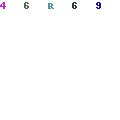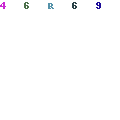Sewell recognized as Distinguished Research Professor
When it comes to solving problems in mathematics, SIUE’s College of Arts and Sciences can of boast top notch performances from one mathematician. Edward Sewell, professor of mathematics and statistics can add distinguished research professor to his list of accomplishments.
Sewell is the second of two recipients of this award in the 2010 academic year. He shares the honor this year with Allison Funk.
Sewell is recognized “for his contributions to the field of operations research, particularly in the area of combinatorial optimization,” according to an email release from Christa Johnson, associate dean for research at the SIUE Graduate School. Johnson also stated in the release that “since 2003, [Sewell] has produced 26 total publications, including 16 journal papers…; 2 book chapters; 6 conference papers; and 2 professional papers.”
The field that Sewell is interested in is operations research. According to him, operations research is interested in answering questions about how to use existing resources as efficiently as possible, using mathematics as the primary tool. One example provided by Sewell is airline company scheduling. He gave the example of how to schedule pilots and flight crews onto the planes to create the least amount of delay.
In combinatorial optimization, Sewell states, the answer must be in the form of a whole number. Although much in the field relies on decimals–sometimes taken out many places–in this field, the answer must be whole because there is a finite set of possible answers. Sewell used an airline example to clarify.
“Let’s say you are producing airplanes, and deciding how many airplanes to produce in a month. You wouldn’t produce a half an airplane. You can produce two or three, but not a half,” said Sewell. “Questions like that, where the answers need to be whole numbers, are the kinds that I investigate.”
There are several problems that Sewell has worked on, at least one stretching more than a decade in time. Sewell states that he and his collaborators have been working on questions surrounding the vaccines for children for many years.
“The question is how to purchase the best set of vaccines at the least expense. A long time ago this was very easy. Each disease had its own vaccine and you might have several manufacturers but you could just choose the least expensive,” said Sewell. “But what they did–the drug companies– started combining several vaccines into a single shot, which makes a lot of sense. But they didn’t all combine the same way. So now you have to choose from among interlocking sets of vaccines to fully vaccinate a child and try to do it in the least expensive way.”
Sewell has also investigated problems surrounding production scheduling. In brief, Sewell stated that it is an assembly line balancing problem.
A typical car manufacturer has a number of work stations where a car moves to during production. At each station, a worker has a minute to complete a number of tasks. The manufacturer knows how long each task should take.
Sewell investigates, using combinatorial optimization and mathematical algorithms, how many and what tasks each station should accomplish in order to come as close as possible to one minute without exceeding it. Sewell stated the overall goal is to have as few workstations as possible.
In terms of concrete results, Sewell stated that he and his collaborators recently solved a set of 269 benchmark problems. Before, no more than 260 had ever been solved together. Sewell said they were also able to solve one that had never been solved previously. They were able to make large gains in terms of what the algorithm was doing.
Sewell stated that they found a method that allowed them to take advantage of the massive information memory storage available with modern technology. Part of their solution was learning how to allow the information to be reused over and over. The removal of the redundancy allowed the time to solve the algorithm to shrink dramatically. This was a key idea from their work.
A second key idea stemming from their work on this issue was a new search strategy. Sewell stated that they used the branch and bound method, which successively divides problems into smaller and smaller pieces until it becomes a problem small enough to solve. Then it is built back into a larger answer.
“It brings it all back together. The order in which it is processed can have a large impact on the overall time,” stated Sewell. “We found a new strategy for where we should break the problem into pieces that allowed us to solve it much faster.” 
Filed Under: Mathematics & Statistics













